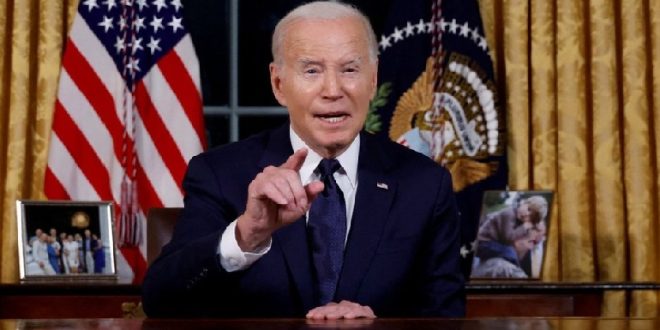31-01-2024
WASHINGTON: The death of three US servicemen and injuring of many others, turns up the heat in an already febrile region and ratchets up the pressure on the US commander-in-chief, President Joe Biden.
 This marks the first time American troops have been killed by enemy fire since the Israel-Gaza war erupted.
This marks the first time American troops have been killed by enemy fire since the Israel-Gaza war erupted.
And it may be the first time during this current crisis that Washington has to take such a hard look at such a difficult decision: where and how should it strike Iran?
Washington will want to send the strongest of messages to Tehran, which it blames for the fires now burning everywhere from Lebanon to Yemen. But it will also want to avoid sparking an even more dangerous escalatory spiral of strikes and counterstrikes.
This moment seems to have been all but inevitable. Since mid-October, US military installations in Iraq and Syria have repeatedly come under attack by Iran-backed militias, injuring a growing number of US soldiers. The US has retaliated, at least eight times, by hitting targets in both countries. It was only a matter of time before American lives were lost on this low-intensity, but high-risk, battlefield.
In his first response, President Biden left no doubt where the blame lies this time. The drone attack on Tower 22, a small outpost along Jordan’s border with Syria, was the work of “radical Iran-backed militant groups operating in Syria and Iraq.”
Iran has shot back, denying any responsibility. Referring to what Tehran calls “resistance groups,” a foreign ministry spokesman insisted “they do not take commands (from Iran) in their decisions and actions about how to support Palestine.”
 Iran’s allies across this region have all been trained and armed by its Islamic Revolutionary Guards Corps (IRGC) or been instructed on how to arm themselves.
Iran’s allies across this region have all been trained and armed by its Islamic Revolutionary Guards Corps (IRGC) or been instructed on how to arm themselves.
This web of contacts has tightened in recent years in their so-called “axis of resistance” and the Israel-Gaza conflict has visibly strengthened this military alliance of radical non-state actors.
But each actor has its agency, its own agendas and ambitions. In Iraq, most of the assaults appear to have been carried out by groups aligned in the umbrella grouping, named the Islamic Resistance in Iraq. Retaliatory strikes are complicated by the fact that some are also part of Iraq’s own armed forces.
In recent months, the US has aimed fire at Iranian assets in the region, including what was described as a training base in Syria and an IRGC weapons depot.
This time, the target will have to be the kind of “high value” one which hurts Iran far more to prove Washington’s mettle in this region, and, just as importantly, at home.
In an election year, President Biden’s political adversaries are already exploiting this crisis to reiterate their charge that he is “soft on Iran.”
“It’s very tricky, very difficult,” analyst Fawaz Gerges, Professor of International Relations at the London School of Economics and Political Science told media. “All scenarios have consequences.” (Int’l Monitoring Desk)
 Pressmediaofindia
Pressmediaofindia




